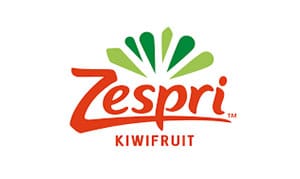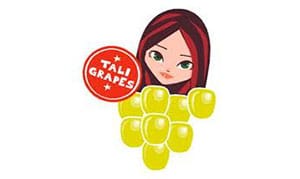The Importance of Fruit Quality Control & Testing for Easy Peelers
Mandarins, clementines, tangerines, satsumas… let’s call the whole thing off, once and for all. You may feel that segmented citrus fruit such as clementines and mandarins all look the same, but they are actually unique. The clementine is its own natural, spontaneous hybrid, recognized by its shape (slightly wider than it is tall), and usually seedless. Mandarins are usually slightly bigger, and not all types are seedless. Clementines also tend to be softer and sweeter than mandarin oranges, but we’ll forgive you if you can’t tell the difference!
In comparison to other citrus fruits, clementines and mandarins do not need as much heat, which makes them hardier and more robust in adverse growing conditions. Easy peelers that come from the hottest regions in the world such as Africa, California, and the Mediterranean basin will bear fruits earlier in the season, and be of a tastier quality and a larger size.
To provide consumers with the best possible quality, controls need to be put in place from the earliest stages – in the field. Growers need to be careful about pests, temperature control, and handling. Wholesalers should think about transport, humidity, and storage conditions, while retailers need to consider shelf life, and both visible and internal defects. All the while, new business use cases such as online marketplaces should consider how they will garner more data about this type of fruit, too. One solution for all stakeholders in the clementine and mandarin quality control value chain? That’s the dream!
Common Easy Peeler Defects
The following defects are the ones that are most likely to affect clementine and mandarin quality across the supply chain:
Handling Damage
The skin of an easy peeler detaches easily, so it’s better to cut the actual stem of the fruit rather than pulling it loose from the branch. Of course, this is more time consuming, but if not - defects can easily occur.
Pests
Insects that can cause damage to the clementine and mandarin plant and fruit include black citrus aphids, the citrus leaf miner, thrips, mites, scales, the mealy bug, and even grasshoppers. Young trees in particular might not be able to fight off these infestations without insecticides.
Skin Defects
Could you identify the reason behind a skin defect on a mandarin or a clementine? From russet and scars, to puffed or broken skin, bruising and stains, the list goes on.
Bruising
Although clementines and mandarins are more robust than other fruits because of their thick skin, it’s still easy to bruise the fruit during the lengthy process from picking to the shop floor. This bruising could be cosmetic or it could be a sign of poor tasting or quality fruit.
Open Wounds
Open wounds can lead to insects, fungus or other diseases in the clementine or mandarin fruit. As mold and fungus can spread quickly through fruit in close quarters, it’s important to catch this early.
Mold/Decay
Some diseases that impact mandarin and clementine trees include armillaria root rot and black root rot fungi, both of which can cause leaves to drop from the tree and impact the root growth. In addition, brown rot of the fruit can be caused when a Phytophthora fungus causes an infection, and this is most common and likely to occur on fruits close to the ground. In addition, it’s important to look out for soft, watery spots in the peel in the packing house as this could be the sign of a penicillium infection and cause blue/green mold.
Softness
If easy peelers become soft, this could impact consumer purchasing habits, and have an adverse effect on taste and quality of the fruit itself. Handling and temperature are big considerations here.
Silver Stripes/Russet
Defects on the skin of the clementine or mandarin may impact price negotiations and demand. Russet defects cause reddish patches on the skin, while silver stripes will be a greyish mark on the surface.
Ribbing/Rugged
A ribbed or rugged appearance of the fruit may be a sign of a water imbalance, or suggest that the fruit is tough or overripe. Knowledge of the rugged nature of the crop ahead of time is essential for setting the price point.
Mold
Sooty mold can be caused by aphid insects or scale, which can be grey, brown, or black. These phloem-sucking insects excrete honeydew on which sooty mold grows. Scale can be found on roots, leaves, or branches.
Freezing Damage
While more mature clementine and mandarin trees can survive periods of freezing, younger trees and their crops will often perish. Easy peelers don’t need as warm conditions as some other citrus, but freezing temperatures are still likely to damage the crop.
Puffed and Creased
The innermost spongy white layer of the peel sometimes separates from the outer surface of the fruit segments. This causes an uneven appearance of the rind surface. Some portions of the rind surface appear inflated (puffy) and other areas are indented (creased). This does not necessarily mean an immediate decrease in quality, but it’s important to understand what to look out for when recognizing damaged fruit.
Interesting Facts about Clementines and Mandarins
- Your average clementine contains 87% water, 12% carbohydrates,and negligible amounts of fat and protein.
- Did you know that clementine and mandarin peels can be used to keep your pets from chewing your houseplants? Just pop a few in the soil.
- Mandarin oranges from Japan are a popular gift in the US, Canada and Russia. They symbolize great wealth during the Asian Lunar New Year celebrations!
- Top producers of segment fruit are China, Spain, Turkey, Brazil and Egypt, in that order.
- Did you know that easy peelers are supposed to help with stress relief, due to some of the oils found in the citrus fruit? Deep breath!
Common Attributes for Easy Peeler Quality Evaluation
The following internal and external clementine and mandarin attributes are commonly used for quality evaluation:
Color
Diameter
Degrees Brix
Acidity
Juice
Seeds
For the full list of attributes that the Clarifruit platform currently evaluates and recommended quality standards for each, download our free app now.
The Clarifruit platform also integrates with 3rd-party technology to evaluate external tomato attributes. Learn more here.















